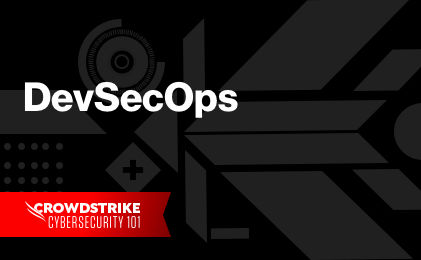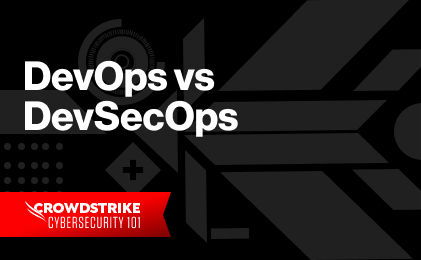Master CNAPPs for Superior Cloud Security
Master CNAPPs for Superior Cloud Security
DevOps definition
DevOps is a mindset and set of practices meant to effectively integrate development and operations into a cohesive whole in the modern product development life cycle. DevOps breaks down the divide between creating a product and maintaining it to allow for higher-paced service and application delivery. It empowers teams to proactively problem-solve with a “you build it, you run it” approach.
Though many DevOps principles were created with cloud-based software development in mind, its unique approach to fostering better communication and breaking down silos can help many different kinds of businesses. No matter what industry your business is in, it almost certainly relies on software and applications to deliver value to clients and meet its goals. Ensuring that your software development is efficient and keeps up with demand is more important than ever.
In this article, we will focus on DevOps as it relates specifically to software development.

Security at the speed of DevOps
Organizations are rapidly adopting DevOps as they retool their IT infrastructure. The speed and agility it delivers enables them to better serve their customers and compete more effectively in the marketplace. Watch this CrowdCast to learn how to quickly deploy and scale while retaining control and preserving compliance when using the cloud.
Download NowKey practices of DevOps
In DevOps, production occurs in self-sufficient cells focused on one entire project rather than in siloed phases. It doesn’t require handoffs between teams, reducing bottlenecks and roadblocks. In addition, developers can implement feedback from operations team members faster, resulting in quick code improvements and problem-solving.
It’s helpful to think of DevOps as an interrelated set of philosophies and frameworks:
| Practice | Description |
|---|---|
| Infrastructure as Code (IaC) | Infrastructure as code involves managing and provisioning computing infrastructure through machine-readable definition files. This practice enables automation, consistency, and scalability in infrastructure management. |
| Collaboration and Communication | Collaboration and communication in DevOps emphasize fostering effective teamwork and sharing knowledge among development, operations, and other stakeholders. Tools and practices in this area include version control systems, issue tracking, chat platforms, and collaborative documentation. |
| Continuous Integration/Continuous Delivery (CI/CD) | Continuous integration involves automating the process of integrating code changes into a shared repository, allowing for early detection of integration issues. Continuous delivery extends continuous integration by automating the deployment process to ensure that code changes are ready for production release at any time, with minimal manual intervention. |
| Shift Left Security | Shift left security is a practice that involves integrating security measures and testing earlier in the software development life cycle (SDLC), typically during the development phase. By addressing security concerns earlier, teams can identify and remediate vulnerabilities more effectively and efficiently, reducing security risks and the costs associated with fixing issues later in the SDLC. |
| Monitoring and Logging | Monitoring involves tracking the performance, availability, and behavior of systems and applications in real time, and logging involves recording events and activities for analysis and troubleshooting. These practices are crucial for detecting and diagnosing issues, optimizing performance, and ensuring the reliability and availability of systems and applications. Tools and practices in this area include monitoring tools, log management systems, and alerting mechanisms. |
Major benefits of DevOps
Many businesses have already seen the benefits of DevOps firsthand. Incorporating DevOps practices into your business can improve company culture by breaking down silos and fostering interdepartmental communication, but it does much more. In addition to reaping the benefits of improved collaboration, your organization can operate with improved speed and functionality both in terms of software development and in the operation of your business.
Some of the most common benefits of DevOps include:
- Speed: The DevOps model allows your developers and operations team to deliver solutions more frequently and with much better quality. It allows for faster innovation and adaptation to ever-evolving markets, driving more efficient business results.
- Rapid Deployment: DevOps teams have the ability to release updates and fix bugs frequently. This provides organizations with the competitive advantage of promptly responding to customer requests and needs.
- Improved Collaboration: One of the foundations of DevOps is a culture of collaboration, especially among software developers and operations teams. This collaboration allows for a more efficient process that saves time and money.
- Reliability: Implementing CI/CD pipeline processes can help ensure all changes to code infrastructure and application updates are safe and functional.
- Scale: DevOps practices, such as infrastructure as code, allow the team to manage processes and scale through automation. Process automation and consistency help DevOps teams manage a growing, complex infrastructure in a reliable way and with reduced risk.
- Security: You can incorporate security measures and best practices into the DevOps process for an added layer of cybersecurity. Active security audits, testing, and policies are often integrated into DevOps workflows.
Common challenges of DevOps
DevOps requires a fundamental shift in several business areas, and this adjustment may require some loss of productivity up front. Some of the most common challenges associated with DevOps include:
- Extended infrastructural changes: Switching to the DevOps model often requires changes to your system’s infrastructure to support new workflows, a time-consuming and resource-draining process.
- Team resistance: The DevOps culture of trust and collaboration takes time and effort to adopt, especially if teams were previously siloed. This challenge is even more difficult to overcome if any teams have a history of conflict. It may also require employees to change the way they work, so it’s natural to face some resistance.
- Too much emphasis on new tools: When implementing DevOps methodology, it’s easy to become captivated by all the DevOps tools available on the market. The right tool can solve plenty of problems, but with each new DevOps tool comes new training and security requirements that can make the transition more confusing. Additionally, integrating tools with your infrastructure takes time and resources.
- Difficulty hiring dedicated DevOps engineers: As powerful as DevOps may be, it is still relatively new, which makes it harder to find engineers who are well versed in it. You might instead need to focus on training your existing team in DevOps philosophies so that they can then train newcomers.
Helpful DevOps tools and services
Many DevOps tools and services exist to help teams at each stage of the process. Here are some of the most common and how they fit in:
| Tool | Description |
|---|---|
| Jenkins | Open-source automation server for CI/CD pipelines. |
| Docker | Containerization platform for packaging applications and dependencies into containers for deployment. |
| Kubernetes | Container orchestration platform for automating deployment, scaling, and application management. |
| Ansible | Configuration management and automation tool for provisioning, application deployment, and orchestration. |
| Chef | Configuration management tool for infrastructure automation and application deployment. |
| Puppet | Configuration management tool for automating provisioning, configuration, and management of infrastructure. |
| GitLab | Web-based Git repository manager and DevOps life cycle tool providing CI/CD pipelines and collaboration features. |
| GitHub | Web-based hosting service for version control using Git, with features for collaboration and code review. |
| Prometheus | Open-source monitoring and alerting toolkit designed for reliability and scalability, used for monitoring containerized applications and microservices architectures. |
| Grafana | Open-source analytics and monitoring solution for visualizing time-series data from various sources, including Prometheus. |
| Terraform | Open-source IaC tool for building, changing, and versioning infrastructure safely and efficiently. |
| DuploCloud | DevOps automation platform for provisioning secure and compliant infrastructures. |





